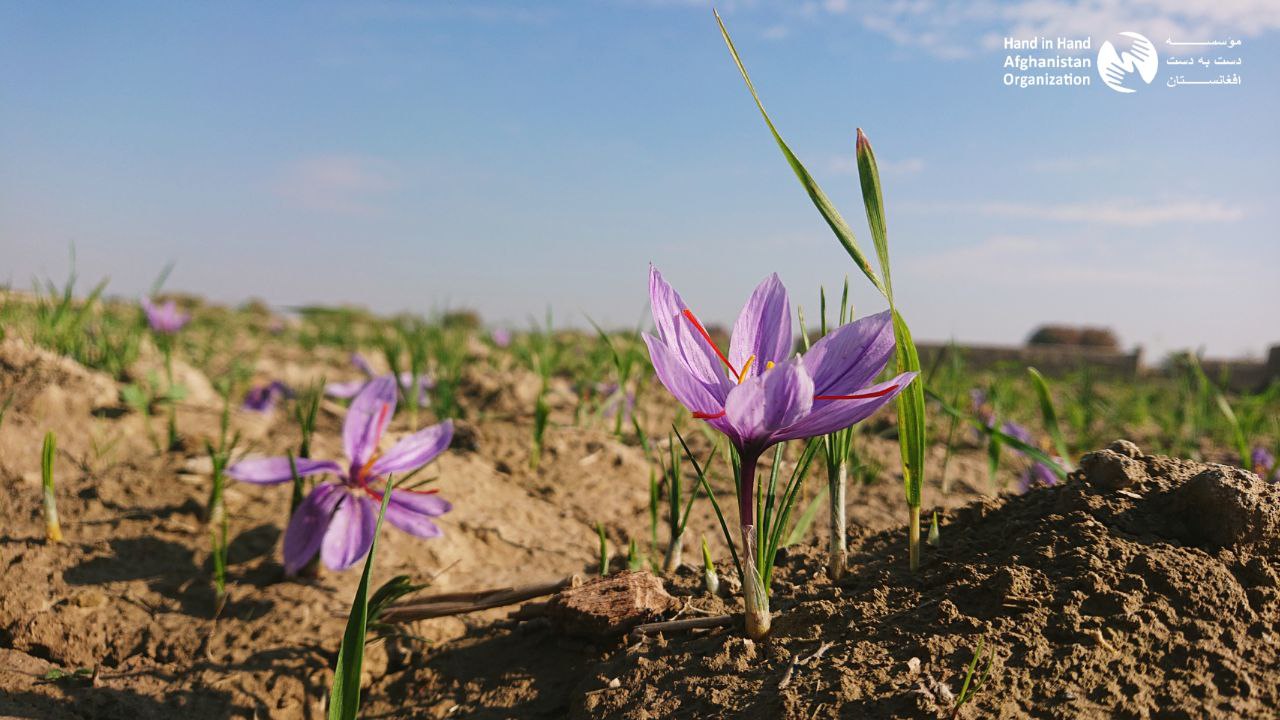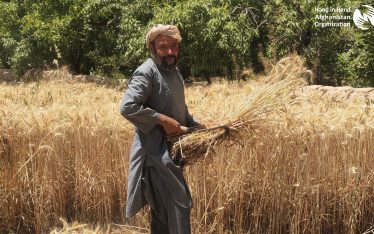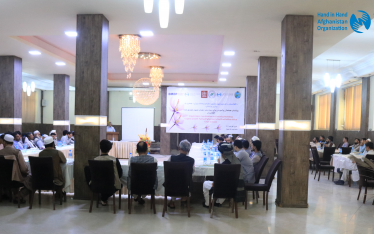The cultivation and growth of saffron in Balkh province have increased and developed significantly through the Red Gold as a livelihood-improving project.
The results and figures received show that farmers in five districts of Balkh province (Nahri Shahi, Balkh, Chimtal, Chahar Bolak, and Dawlat Abad) have been able to obtain more than 83 kilograms of saffron in the first half of the agricultural year, and it is expected that this figure will increase until May 2023.
Hand in Hand Afghanistan implements the Red Gold (Improving Afghan livelihoods through saffron cultivation) project in Afghanistan’s Balkh province from May 2022 to February 2026 with the financial support of the Swedish Post Code Lottery through Hand in Hand Sweden.
This project directly benefits 2,400 farmer beneficiaries, 1,200 men and 1,200 women, and indirectly benefits 7,200 family members and 200 members of existing saffron associations.
The project intends to provide hard-pressed farmers with the opportunity to transform their modest, unproductive farms into booming companies by utilizing a valuable, in-demand, and sustainable crop, saffron. Women will also be allowed to participate actively in business and saffron production. Hand in Hand and the farmers will work together to administer the initiative to develop a sustainable and profitable economy in the Balkh.
After informing and explaining the project to 70 villages in five districts, which were selected based on the memorandum of understanding with farmers, the joint farmers allocated 758 square meters of land to plant saffron. Following that, the training phase on the cultivation, crop maintenance, irrigation, and processing of saffron were delivered, and the phase of saffron corm distribution began. A total of 305 tons of saffron corms were distributed to 1,200 farmers, each farmer receiving 254.166 kilograms of saffron corms.
At the moment, serious challenges endanger the lives of 30 million people in Afghanistan. According to the most recently released figures by the UN, almost 97% of Afghans live in severe poverty. In addition to the economic crisis and poverty, hunger and food insecurity are the most pressing concerns in the country. According to World Food Program data, more than 19.9 million Afghans confront acute food insecurity, and 6 million people face emergency-level food insecurity.
In Balkh province, the majority of the population is in an extreme crisis and face serious food insecurity. Small-scale agriculture provides a living for 80% of the population. Agriculture is dominated by conventional practices, which provide poor and rapidly diminishing yields and are very vulnerable to climate change. The lean and dry soils are ideal for growing saffron, as saffron corms are water-efficient, that only need water twice a year.
Afghanistan is one of the largest producers of saffron, which also has the distinction of being the best product. The cultivation of this plant has not only kept the fields green, but has also become a hope for thousands of families. The cultivation and production of saffron create numerous job opportunities, especially for women, who perform 80% of the activities, including harvesting, drying and packaging.
Afghan farmers have many challenges in standardizing and implementing scientific methods, and the turning point is that the Red Gold project, above all, transferred basic and necessary knowledge to these farmers at the village level through agricultural trainers and guided them in the matter of standardizing the harvest.
Daad Mohammad, a farmer and beneficiary in Balkh district, says that he learned all the steps during the professional and practical training. He says: “Education at this stage is very necessary and important, because without acquiring knowledge about preparing the land, how to plant, when to water, collecting, and processing it, I did not have previous information to achieve better results.”
HIHAO intends to achieve the basic goals of this economic and agricultural development program during the coming years, focusing on sustainable saffron value chain with capacity building and the professional empowerment of farmers, along with the participation of women in the process of economic and professional growth. In addition, Hand in Hand Afghanistan aims to promote saffron cultivation in the north to support the agriculture and economy of people and families. For this purpose, there are efforts and plans to form associations at the district level to institutionalize and keep the cultivation and production processes sustainable, strong, and effective.



